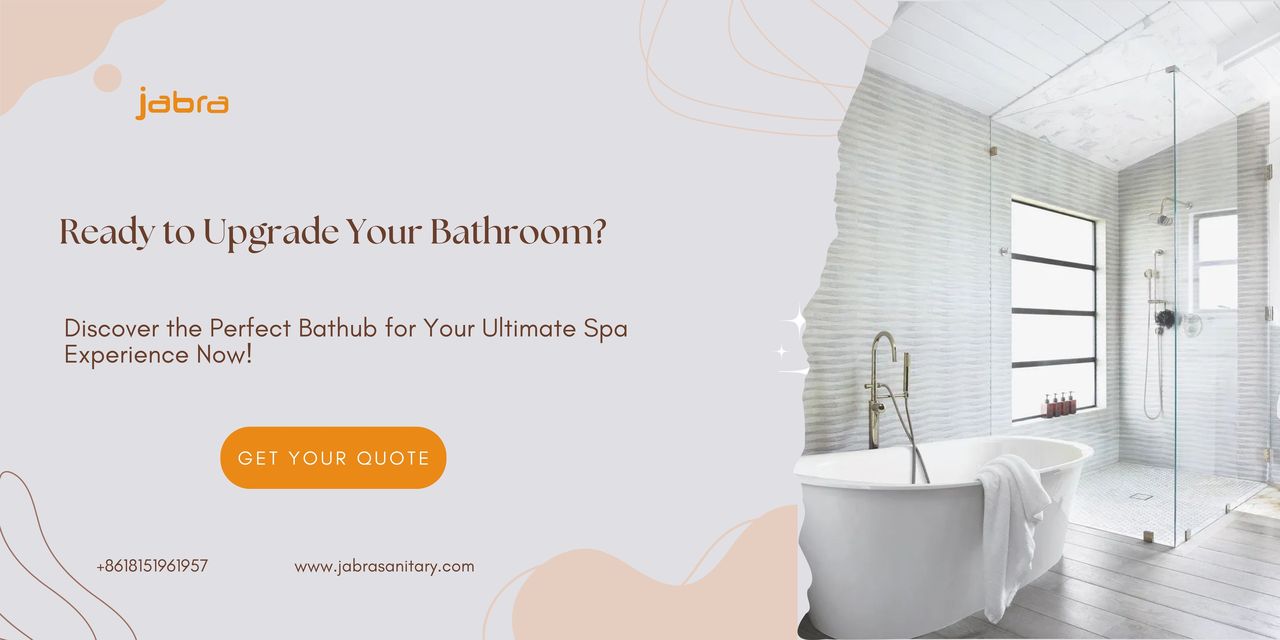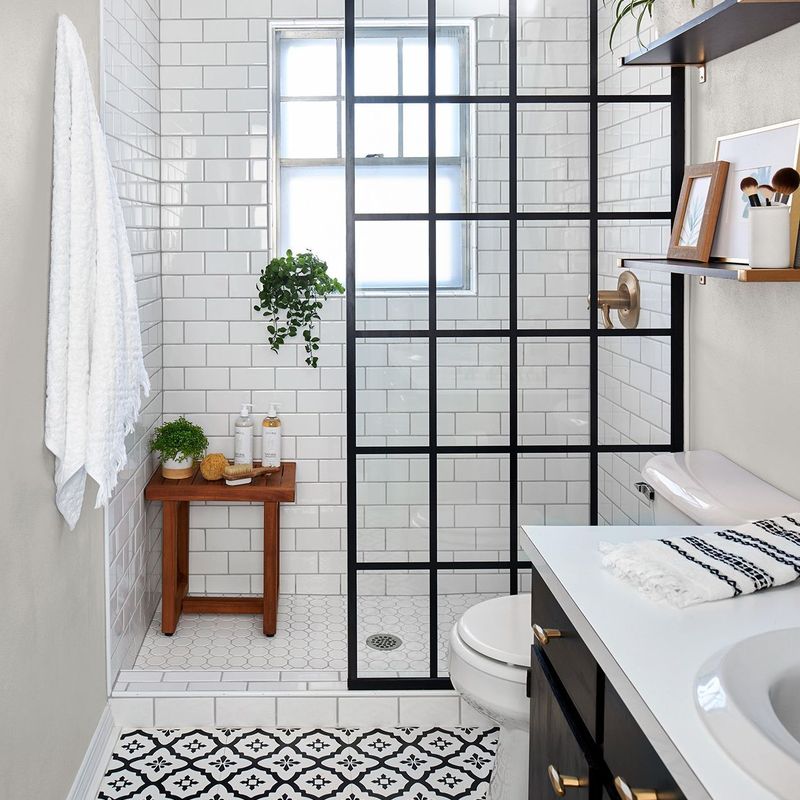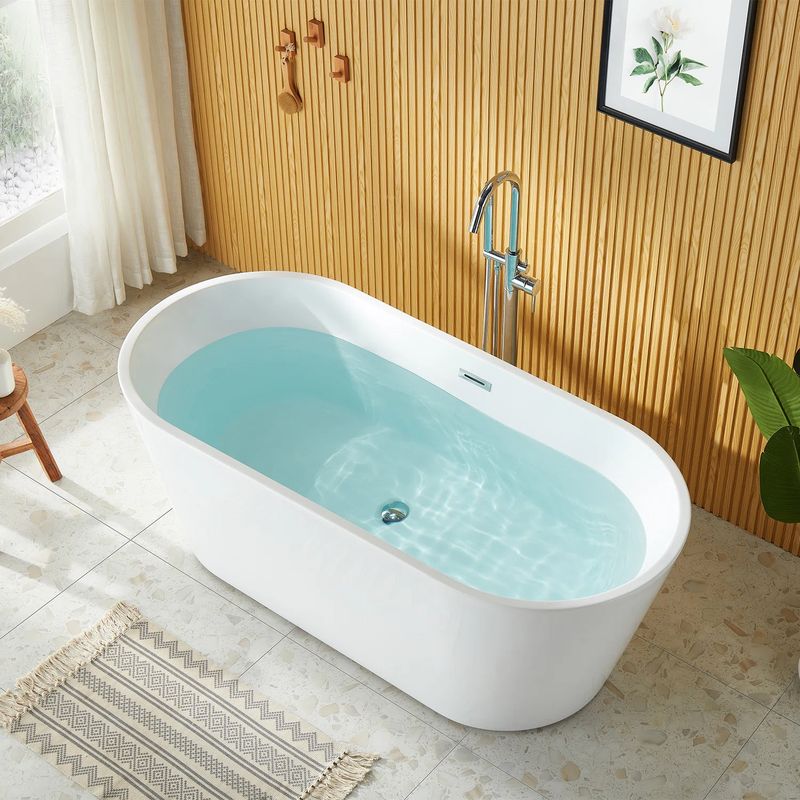 English
English
Jabra Sanitary is a sanitaryware supplier offering toilets, sinks, faucets, bathtubs, etc., at competitive prices. If you're a distributor, wholesaler, or project contractor, get a quote today!
 $23.9 Limited-time Offer
$23.9 Limited-time Offer Consignment Policy
Consignment Policy 20 Years of Experience
20 Years of Experience
Imagine stepping into your bathroom after a long day and sinking into a deep, warm soaking tub. Sounds like a dream, doesn't it? But if your bathroom is on the smaller side, you might think this luxury is out of reach.
Think again! With the right planning and design choices, even the coziest bathrooms can accommodate a soaking tub. If you've ever wondered, "Can I put a soaking tub for small bathrooms?" the answer is a resounding yes—and we're here to show you how.
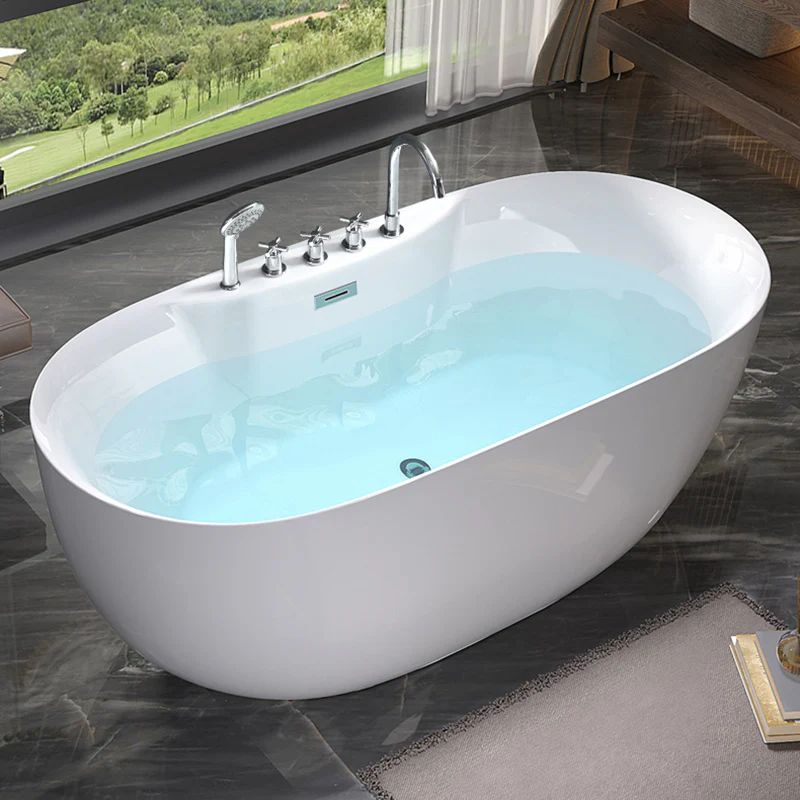
Table of Contents
Can I Put a Soaking Tub in a Small Bathroom?
Benefits of Soaking Tubs in Compact Bathroom Spaces
Types of Soaking Tubs Suitable for Small Bathrooms
Space-Saving Design Tips for Installing Soaking Tubs
Plumbing and Structural Considerations for Small Bathroom Soaking Tubs
Material Matters: Lightweight Options for Easy Installation
How to Choose the Right Soaking Tub for Small Spaces
FAQs
Conclusion
Can I Put a Soaking Tub in a Small Bathroom?
Yes, you can install a soaking tub for a small bathroom! These deep tubs, perfect for a relaxing soak, can work in compact spaces with careful planning around space, size, and design. Here's how to make it happen.
Making It Fit
Start by measuring your bathroom—length, width, and height—to see what's possible. Soaking tubs come in space-saving styles like Japanese soaking tubs or corner tubs, often as short as 48 inches long but deeper for comfort.
Based on the National Kitchen & Bath Association, leave at least 6–12 inches of clearance around the tub for movement and cleaning and 32 inches in width for comfort.
Choosing the Right Tub
Pick a tub that suits your space. Japanese-style tubs are small and deep, using less water, while corner tubs tuck neatly into unused areas. Freestanding tubs can "float" for flexibility, and some tubs are just 30 inches wide. Aim for at least 32 inches in width, though, to ensure a comfy soak.
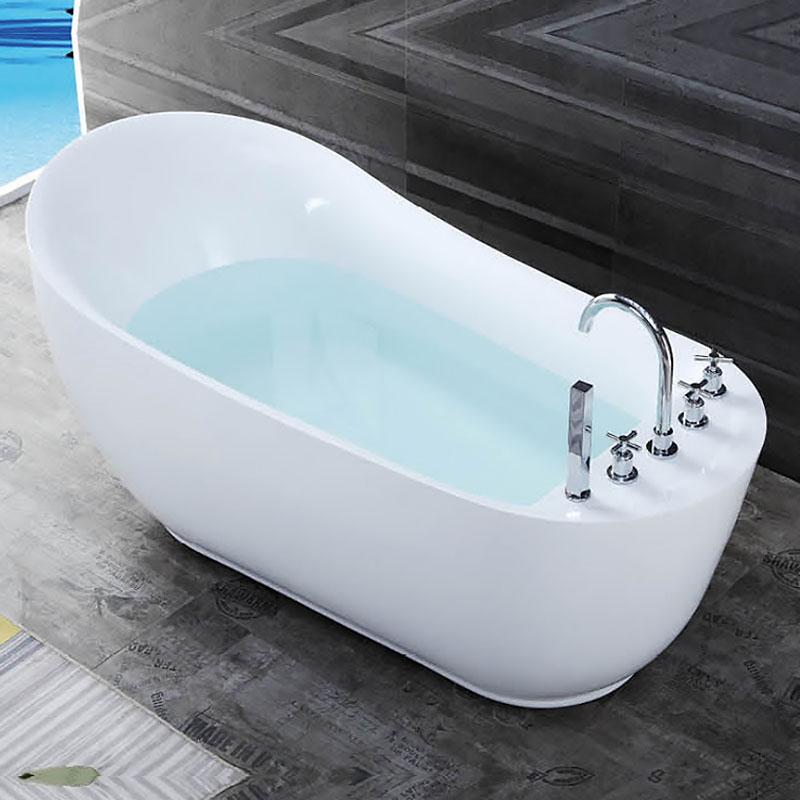 Ads
Ads
Large Deep Soaking Bathtub
The large soaking tub features an ergonomic backrest with a curved design, ensuring a relaxing and supportive soak that aligns perfectly with your body's natural contours.
Best Materials
Stick to lightweight materials like acrylic or stone resin to avoid floor reinforcement.
Installation Tips
A professional ensures your small bathroom's plumbing and structure can handle it, avoiding costly mistakes.
Smart Design Ideas
Maximize space by combining the compact soaking tub with a shower—add a glass screen or curtain for dual use. Place the tub under a window (frosted for privacy) or in a corner to open up the room. Light colors, mirrors, and built-in shelves can make the bathroom feel bigger and more functional.
Budgeting
Expect to spend $800–$4,000 on the compact soaking tub itself, plus installation. Total costs could hit $5,000–$20,000, depending on complexity. Plan to keep it affordable.
Benefits of Soaking Tubs in Compact Bathroom Spaces
Adding a small bathroom soaker tub to a small bathroom might seem tricky, but it brings a host of benefits that make it worth the effort. <Also check what is a soaking tub>
Space Efficiency
Soaking tubs are designed to be compact yet deep, making them perfect for small bathrooms. Unlike traditional tubs that stretch out, soaking tubs focus on depth, so they take up less floor space.
Deliver Comfort
Comfort is where soaking tubs truly shine. These tubs are deeper than standard ones, allowing you to fully immerse yourself in warm water. The ergonomic design supports your body, making it easy to relax after a long day. Even in a small bathroom, you can create a spa-like experience.
Aesthetic Appeal
A soaking tub for small spaces can be a stunning focal point in your bathroom. With sleek lines and modern designs, these tubs add a touch of elegance to any space.
Freestanding or corner tubs, in particular, can make your bathroom look more stylish and open. Light colors and minimalist fixtures enhance the aesthetic, making your small bathroom feel bigger and brighter.
Wellness and Relaxation
Soaking in warm water isn't just relaxing; it's good for your health too. The warmth helps soothe sore muscles, reduce stress, and improve circulation. In a small bathroom, a soaking tub for small spaces becomes your wellness retreat. It's a simple way to unwind and take care of yourself without leaving home.
Plus, the calming atmosphere can turn your bathroom into a peaceful sanctuary, perfect for self-care.
Increased Home Value
Installing a soaking tub can also boost your home's value. Many buyers see it as a desirable feature, especially in homes with small bathrooms. It shows that even compact spaces can offer luxury and comfort. According to real estate experts, bathrooms with soaking bathtubs for small bathrooms often appeal to buyers looking for a spa-like experience.
Types of Soaking Tubs Suitable for Small Bathrooms
When it comes to small bathrooms, choosing the right compact soaking tub is key. Luckily, there are several types of soaking tubs designed to fit snugly into compact spaces without sacrificing comfort or style.
Compact Freestanding Soaking Tubs
Compact freestanding soaking tubs are standalone beauties that don't need to be built into the wall. Their versatility is a major plus—you can place them anywhere in your bathroom to make the most of your space. These small bathroom soaker tubs often have a sleek, modern look that can make your bathroom feel more open and airy.
Look for models around 48-54 inches long; they're perfect for small bathrooms. Plus, they can be a stunning focal point, adding a touch of elegance to your space.
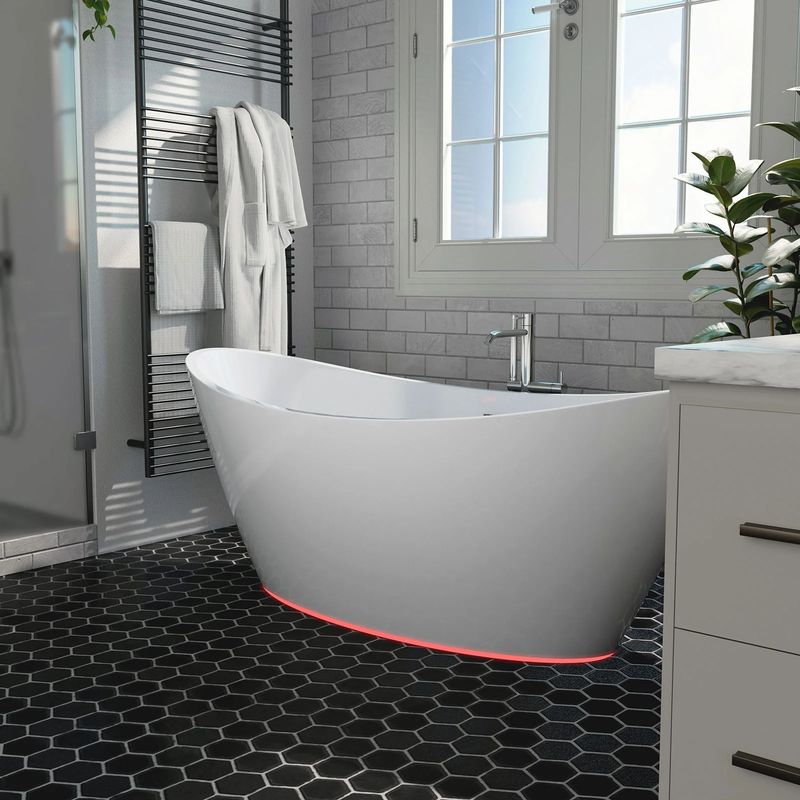
Japanese-Style Soaking Tubs
If you're short on floor space, Japanese-style offers are designed for upright sitting, with depths up to 27 inches (allowing shoulder-deep immersion) and widths as narrow as 30 inches, making them 30% more space-efficient than traditional lying tubs.
These tiny Japanese soaking tubs often come with a built-in seat for extra comfort and use less water, which is a bonus. Their unique design makes them both space-efficient and stylish.
Corner Soaking Tubs
Corner soaking tubs are made to fit neatly into the corner of your bathroom, utilizing space that often goes unused. By tucking the tub into the corner, you free up more floor area for other fixtures or simply to move around. These soaking bathtubs for small bathrooms usually have a triangular or curved front, and they strike a great balance between size and comfort.
For small bathrooms, aim for a corner tub that's about 48-54 inches along each wall. Some even come with built-in storage or shelving to maximize functionality.
Mini Soaking Tubs (50–60 inches in length)
Mini soaking bathtubs for small bathrooms are the shorter cousins of traditional soaking tubs, specifically designed for small spaces. They're still deep enough for a relaxing soak but don't stretch out as long, making them a perfect fit for tight areas. You can find them in various styles, from freestanding to built-in, and they often have a compact design to save even more space.
While they're shorter, they still provide a comfortable bathing experience, making them an excellent compromise for small bathrooms.
Space-Saving Design Tips for Installing Soaking Tubs
Transforming a small bathroom into a relaxing oasis with a soaking tub is easier than you might think! With a few clever design tricks, you can make your compact space feel larger, brighter, and more functional.
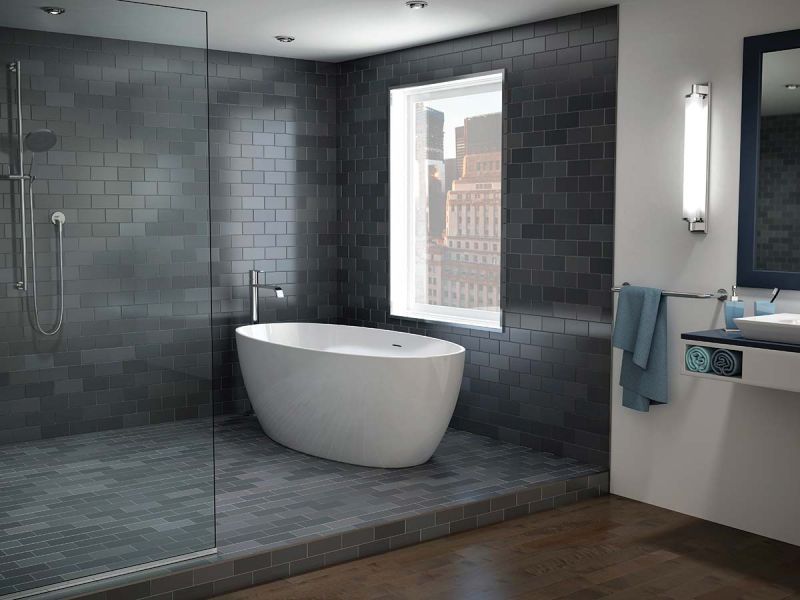
Utilize Corner Space
One of the smartest ways to save space in a small bathroom is by installing a corner soaking tub. These tubs are designed to fit snugly into the corner, making use of an area that often goes unused.
By tucking the compact soaking tub into the corner, you free up more floor space for other fixtures or simply to make the room feel more open. Plus, many corner tubs come with built-in shelving or storage, adding extra functionality without taking up more room.
Choose Light Colors
Light colors can work wonders in a small bathroom. When you paint the walls or choose tiles in soft, light shades like white, beige, or pastel tones, the room instantly feels bigger and brighter. That's because light colors reflect more light, creating an airy, open feel.
You can even extend this to your compact soaking tub—opting for a light-colored soaking tub can blend it seamlessly into the space, making it feel less bulky. If you want to add a pop of color, try using small accents like towels or rugs instead of overwhelming the room with dark hues.
Incorporate Mirrors
Mirrors are a small bathroom's best friend. They reflect light and create the illusion of depth, making the room feel twice as large. A large mirror above the sink is a classic choice, but you can also get creative with mirrored cabinets or even a full-length mirror on the wall.
These not only make the space feel bigger but also add a touch of elegance. For an extra boost, place the mirror opposite a window to reflect natural light throughout the room.
Minimalist Fixtures
When space is tight, less is more. Choosing minimalist fixtures can prevent your bathroom from feeling cluttered. Opt for sleek, simple designs like a slim faucet, a compact toilet, or a floating vanity. These fixtures take up less visual space and can make the room feel more streamlined.
A floating vanity, for example, frees up floor space underneath, making the bathroom feel more open. You can also choose a minimalist showerhead or towel rack to keep the look clean and uncluttered.
Consider Sloped Ceilings
If your small bathroom has a sloped ceiling, like in an attic or loft, don't worry—you can still install a soaking tub! The key is to place the tub under the slope to maximize headroom. This way, you can enjoy your soak without feeling cramped.
You can also use the remaining space under the slope for storage or other fixtures, like a small vanity or shelving.
Plumbing and Structural Considerations for Small Bathroom Soaking Tubs
When you're planning to install a soaking tub for small bathrooms, it's not just about choosing a stylish tub or making it fit aesthetically. There are practical, behind-the-scenes factors that can make or break your project.
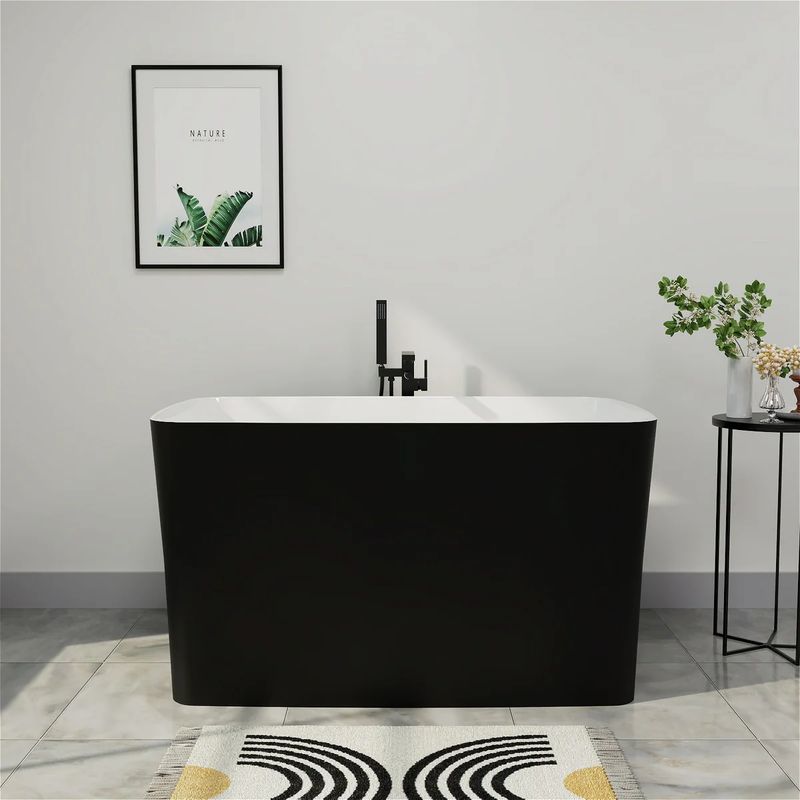
Plumbing Adjustments
In a small bathroom, space is tight, and your plumbing setup needs to adapt to accommodate a soaking tub. Here's what you should keep in mind:
- Moving or Extending Pipes: Your existing plumbing might not align with the new tub's location or size. Precision is key in a compact space, so planning is essential.
- Water Supply and Drainage: Soaking tubs hold more water than standard tubs, which puts extra demand on your plumbing. Check that your water heater can deliver enough hot water for a full soak—nobody wants a lukewarm bath! Also, ensure your drainage system can handle the larger volume of water when you pull the plug.
- Space Constraints: With limited room to maneuver, plumbing adjustments in a small bathroom are like solving a puzzle. Every pipe and fixture needs to fit perfectly. A quick tip: sketch out your layout beforehand to visualize where everything will go and avoid surprises during installation.
Floor Support
Soaking tubs for small bathrooms are luxurious, but they come with a catch: weight. Filled with water and a person, they can tip the scales at hundreds of pounds. Your bathroom floor needs to be up to the task. Here's how to ensure it's ready:
- Assess the Floor's Strength: The floor's ability to support a soaking tub depends on its construction. A ground-floor bathroom might handle the load easily, but an upstairs space requires extra scrutiny.
- Reinforcement Options: If your floor isn't strong enough, it's not a dealbreaker—you can reinforce it. Adding joists or support beams underneath can bolster the structure. This might involve opening up the ceiling below or accessing the subfloor, but it's a worthwhile investment for safety and stability.
- Get Expert Input: Before you commit to a tub, have a structural engineer or contractor evaluate your floor. They'll assess its capacity and recommend any necessary upgrades.
Professional Installation
Installing a soaking tub for small bathrooms isn't a DIY project for the faint of heart. Here's why bringing in the pros is a smart move:
- Specialized Skills: Professionals have the know-how to tackle complex tasks—like adjusting plumbing in cramped quarters or reinforcing a floor.
- Safety and Reliability: A botched installation can lead to leaks, structural damage, or even injuries. Pros ensure the tub is level, the plumbing is leak-free, and the floor can bear the load.
- Time and Hassle Savings: Between measuring, plumbing tweaks, and potential floor work, installing a tub is a big undertaking. In a small space, the margin for error is tiny. Hiring experts lets you skip the stress and enjoy the results sooner.
- Added Assurance: Many installers offer warranties on their work. If something goes wrong—like a pipe joint loosening—they'll fix it at no extra cost.
Material Matters: Lightweight Options for Easy Installation
Choosing the right material for your small bathroom soaker tubs is crucial, especially in a small bathroom where every inch counts. Lightweight materials not only make installation easier but also reduce the strain on your floor and plumbing.
Acrylic
Acrylic is a top choice for small bathrooms because it's lightweight and versatile. Made from a type of plastic reinforced with fiberglass, acrylic tubs are durable yet easy to handle. They're known for their smooth, glossy finish, which adds a touch of elegance to any bathroom.
- Weight and Installation: Acrylic is significantly lighter than traditional materials like cast iron, simplifying transport and installation in tight spaces. This reduces labor costs and makes it a practical choice for small bathrooms.
- Design Flexibility: Acrylic can be molded into various shapes and sizes, ideal for compact spaces. You'll find options that fit snugly into corners or alcoves, maximizing your bathroom's layout.
- Maintenance: Its non-porous surface resists stains and is easy to clean—a quick wipe with a mild cleaner keeps it looking new.
- Drawbacks: Acrylic can scratch more easily than other materials, so avoid sharp objects. It may also lack the longevity of heavier options like stone resin.
Stone Resin
Stone Resin is a composite of natural stone and resin, delivering a luxurious feel with solid durability. While heavier than acrylic, it remains lighter than traditional stone or cast iron, making it a viable option for small bathrooms.
- Heat Retention: Stone resin excels at keeping water warm longer, enhancing the soaking experience.
- Aesthetic Appeal: With sleek, modern designs, stone resin tubs add an upscale vibe. Their substantial feel elevates even the smallest bathrooms.
- Installation: Though heavier than acrylic, stone resin is still manageable.
- Maintenance: Resistant to chips and scratches, its non-porous surface is easy to maintain and resists fading over time.
- Drawbacks: It's pricier than acrylic or fiberglass, but the investment pays off in luxury and durability.
Fiberglass
Fiberglass is a budget-friendly, lightweight option that's easy to install. Made from woven glass fibers coated with resin, it's strong yet flexible, perfect for small spaces.
- Affordability: Fiberglass stands out as the least expensive option, ideal for cost-conscious homeowners.
- Installation: Its lightweight and flexibility simplify maneuvering into tight spots.
- Design Options: Available in various shapes and sizes, fiberglass tubs can sport a glossy finish that mimics pricier materials.
- Drawbacks: It's less durable than acrylic or stone resin, and prone to scratching and fading. It also retains heat poorly, so bathwater cools faster.
- Maintenance: Its potentially porous surface requires regular cleaning to prevent stains or mildew.
| Material | Weight and Installation | Design Flexibility | Maintenance | Drawbacks |
|---|---|---|---|---|
| Acrylic | Lightweight, easy to install, reduces labor costs | Can be molded into various shapes, ideal for compact spaces | Non-porous, easy to clean, resistant to stains | Prone to scratches, may lack longevity compared to heavier materials |
| Stone Resin | Heavier than acrylic, but manageable for installation | Sleek, modern designs; upscale feel | Resistant to chips and scratches, easy to maintain | More expensive than acrylic or fiberglass |
| Fiberglass | Lightweight, easy to install, budget-friendly | Available in various shapes, the glossy finish mimics pricier materials | Require regular cleaning to avoid stains or mildew | Less durable, prone to fading, retains heat poorly |
How to Choose the Right Soaking Tub for Small Spaces
Choosing the perfect soaking bathtubs for small bathrooms can feel overwhelming, but with the right approach, it's totally doable! A well-chosen tub can transform your compact space into a relaxing oasis without cramping your style or breaking the bank.
1. Measure the Bathroom Space
First things first—grab a tape measure! Don't skip this step, because even a few inches can make or break your plan. Also, consider the door swing and nearby fixtures like the toilet or sink.
2. Choose the Location (Against the Wall, in the Corner, Near Windows)
Where you place your tub can change the whole feel of your bathroom. Here are some smart options for small spaces:
- Against the Wall: This is a go-to choice for saving space. It keeps the small bathroom soaker tubs tucked out of the way and gives your bathroom a neat, streamlined look.
- In the Corner: A corner tub maximizes unused space and adds a stylish twist. It's perfect for square rooms or awkward layouts.
- Near Windows: If you've got a window, placing the tub nearby can make bath time feel luxurious with natural light. Just add frosted glass or curtains for privacy.
3. Adequate Clearance Around the Tub
Fitting the tub is only half the battle—you need space to use it too! Leave at least 24 inches of clearance on one side so you can step in and out comfortably. This also makes cleaning a breeze. Picture yourself in the room: if you're bumping into walls or squeezing past fixtures, it's too tight. Planning for clearance keeps your bathroom practical and user-friendly.
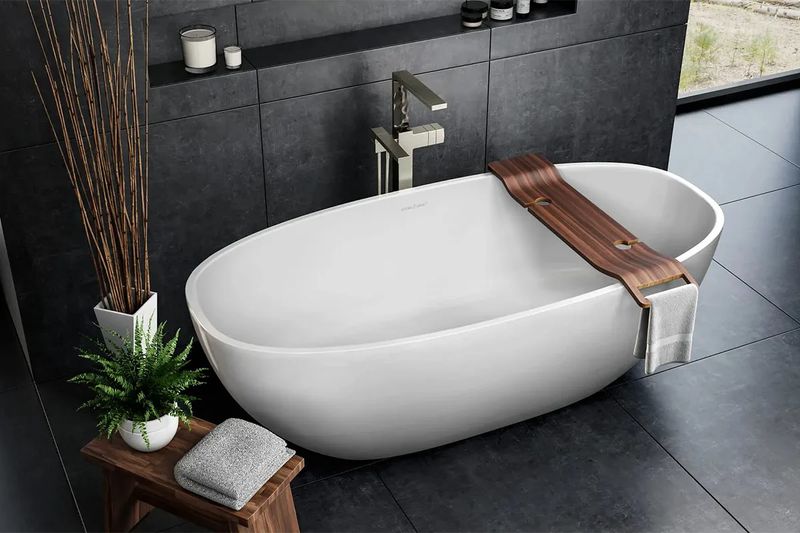
4. Ensure Easy Delivery and Installation
Getting a tub into a small bathroom can be a logistical puzzle. Before you buy, measure your doorways, hallways, and any tight corners the tub needs to navigate. Some tubs are easier to maneuver if they come in pieces or have a slim profile.
For installation, consider hiring pros—they'll handle the plumbing and setup so you don't end up with leaks or stress. It's an extra step that saves headaches down the road!
5. Maximize Functionality Around the Soaking Tub (Storage, Extra Features, Minimalist Design)
In a small bathroom, every inch matters. Boost functionality with these ideas:
- Storage: Add built-in shelves or cabinets around the tub for towels and toiletries. It keeps essentials handy without cluttering the space.
- Extra Features: Look for soaking tubs for small spaces with built-in ledges or seating for added comfort and utility.
- Minimalist Design: Stick to clean lines and simple fixtures. A floating vanity or wall-mounted shelves can open up the floor and make the room feel bigger.
6. Budget for a Small Bathroom Soaking Tub (Tub Price, Installation Cost, and Long-Term Value)
Money matters, so let's break it down. A basic acrylic soaking tub might cost $800, while a fancy stone resin model could hit $4,000 or more. Installation adds another $1,500 to $7,500, depending on your setup. Don't forget extras like plumbing tweaks or floor reinforcement for heavier tubs.
While it's tempting to go cheap, a quality tub offers long-term value—think durability and even a boost to your home's resale price.
7. Find a Reputable Brand or Retailer
Don't rush the purchase—research matters! Look for brands with solid reviews and a track record for quality, like Kohler, Jabra Sanitary, or Badeloft USA. Check for warranties and good customer service in case issues pop up. If you can, visit a showroom to see the small bathroom soaker tubs up close and test their size and feel.
FAQs
We know you might have questions about adding a compact soaking tub to your small bathroom, so we've gathered the most common ones here.
How Deep Should a Soaking Tub Be?
A soaking tub should be at least 14 inches deep to let you fully relax in the water. For small bathrooms, we recommend compact models, like tiny Japanese soaking tubs, which can be 24 inches deep but shorter in length.
How Much Space Is Needed for a Soaking Tub?
To fit a soaking tub in a small bathroom, you'll need a space of about 5x7 feet, though some compact soaking tubs can work in even smaller areas. However, you also need room around the tub for easy access—about 30 inches of clearance is ideal.
What Type of Bath Is Best for a Small Bathroom?
For small bathrooms, compact soaking tubs are the best choice because they balance comfort and space efficiency. Japanese-style soaking tubs, which are short and deep, are perfect for tiny spaces. Corner soaking tubs also work well, as they tuck neatly into unused corners.
How Do You Make a Small Bathroom Look Luxurious?
Start with light colors like white or soft gray to open up the space. Add a large mirror to reflect light and create a sense of depth. Choose minimalist fixtures, like sleek faucets or wall-mounted taps, to keep the look clean and elegant.
Incorporate small touches like plush towels, a stylish tray for bath products, or soft lighting with dimmable LEDs.
What Is the Difference Between Japanese and American Bathtubs?
Japanese soaking tubs are shorter and deeper, designed for sitting upright with water up to your shoulders. American bathtubs are longer and shallower, meant for lying down.
Japanese tubs often use materials like wood or stainless steel for a traditional look, while American tubs commonly use acrylic or fiberglass for affordability.
Conclusion
Adding a soaking tub to a small bathroom is doable with smart planning. Compact tubs, like Japanese-style or corner models, save space while offering deep relaxation. They boost comfort, add luxury, and can increase your home's value.
Choose lightweight acrylic or durable stone resin tubs for easy installation. Design tips, like light colors and mirrors, make your bathroom feel bigger.
For top-quality options, explore brands like Jabra Sanitary for trusted options. Their compact soaking tubs blend style and functionality, perfect for small spaces.







